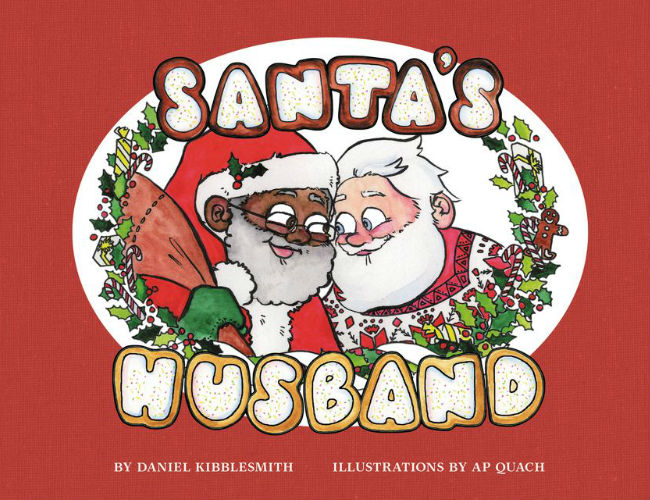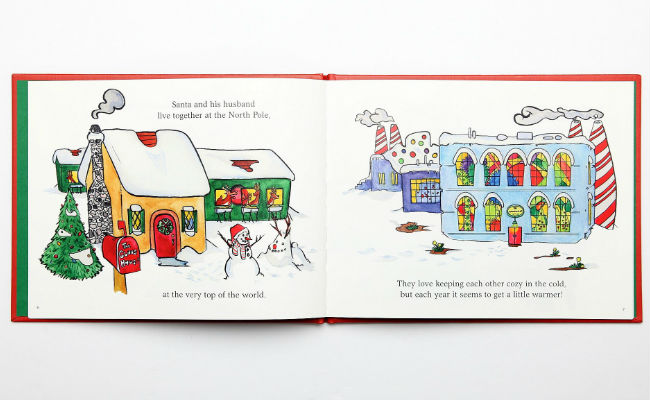
Right let’s just get it out there then shall we?
In Santa’s Husband, Daniel Kibblesmith’s delightful take on the person of Santa Claus who, you may recall, is a teeny-tiny bit central to modern celebrations of Christmas – for those of a religious persuasion, please note I’m not sidelining Jesus, simply stating the obvious – good old St Nick is black, gay and married to a sweet, supportive man named David.
The reason I’ve spelt that out straight off the bat is that (a) it’s pretty the book’s main premise and one Kibblesmith, with lovely illustrations by Ap Quach, executes quite nicely and (b) it’s far better to point out the tinsel-draped elephant in the room from the get-go.
That being said, you can imagine that shaking up everyone’s modern idea of Santa Claus, who is fictional by the way and a relatively recent phenomenon, sculpted every bit as much by commercial interests as age-old tales of a kindly but firm man who looks after the poor and downtrodden, is going to be controversial in certain circles.
And, of course, you would be right as this article in VICE, which talks with Kibblesmith about the book and the inevitable furor it engendered, illustrates all too well.
The thing is Santa Claus has always a malleable creation, ever since the fourth-century or so when Saint Nicholas, a fourth-century Greek bishop and gift-giver of Myra, inspired the idea of socially-idealistic figure, one so revered he gave rise to Father Christmas, Sinterklaas and a host of other figures.
His biggest modern boost came courtesy of an 1823 poem “A Visit From St. Nicholas” and the work of political cartoonist Thomas Nast who, apart from making difficult for the governing elites of nineteenth-century, pretty much came up with the image we now have of Santa Claus, one burnished even further by the likes of Coca-Cola in the twentieth-century.

So Santa has never really been a fixed concept which is why Kibblesmith’s sweetly poetic take on the much-loved figure is as natural and normal as you can get.
Santa’s Husband is, in many ways, delightfully conventional.
In the book Santa is married, devoted to his husband who is equally devoted back, helping him cope with the many demands of his intensely seasonal job:
“Santa’s husband helps
Santa with all the
hard work that makes
Christmas happen.”
That means everything from checking lists of naughty and nice kids to feeding the reindeer and much more beside including impersonating his time-poor and geographically-challenged hubbie.
Sounds to me like a pretty caring, supportive partnership, one filled with commitment, love, caring and cosy nights in, and finally after too long a legal delay, a wedding where everyone who’s anyone festively pops in to wish the happy couple well.
The book even tackles the “rewriting history line of attack, making it clear, and they’re right given Santa’s history, that he’s been imagined “hundreds of different ways over the years!”
Sure there are lines about climate change and political correctness, but ultimately what makes Santa’s Husband such a gorgeous book for anyone to read, adult or child, is that reinforces the idea of Santa as a selfless, caring figure who gives up a lot to fulfill his life’s work and who wouldn’t be able to do it without his husband.
If Christmas means anything, it’s love and inclusion and Kibblesmith’s beautiful read has that in spades, reminding us all over again why the season really is the most wonderful time of the year.